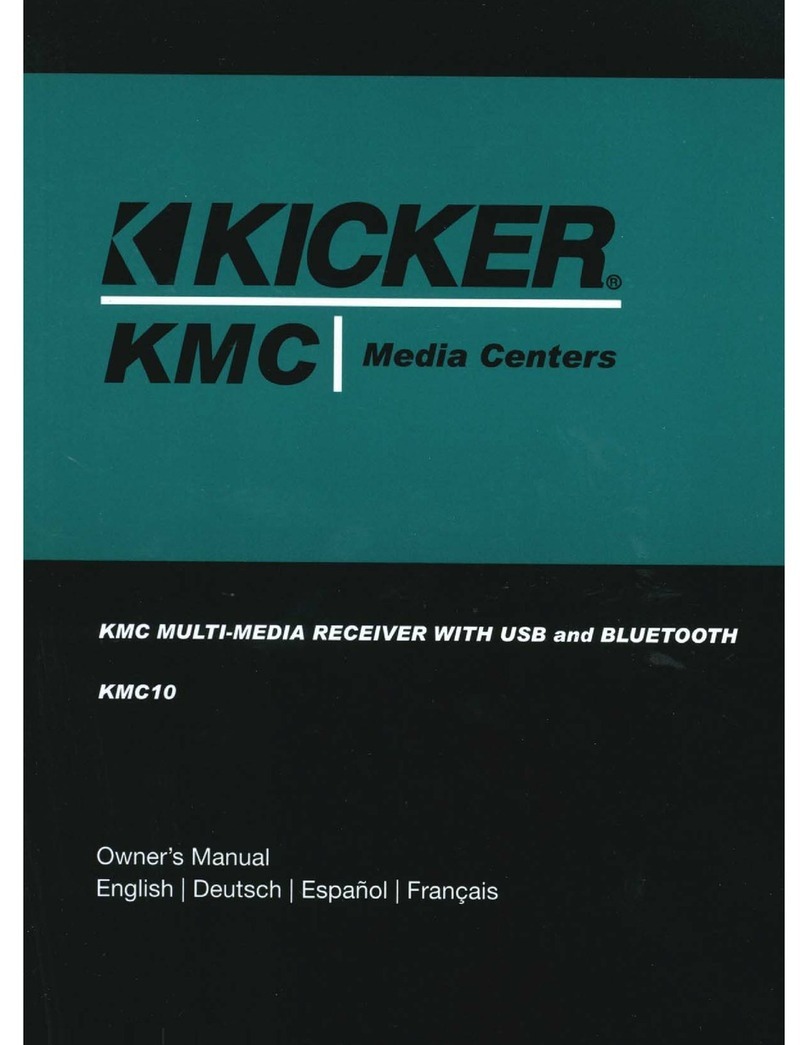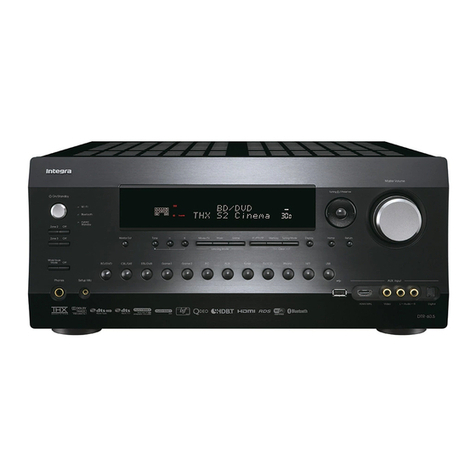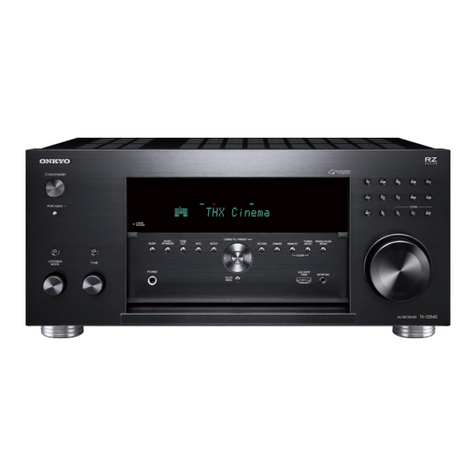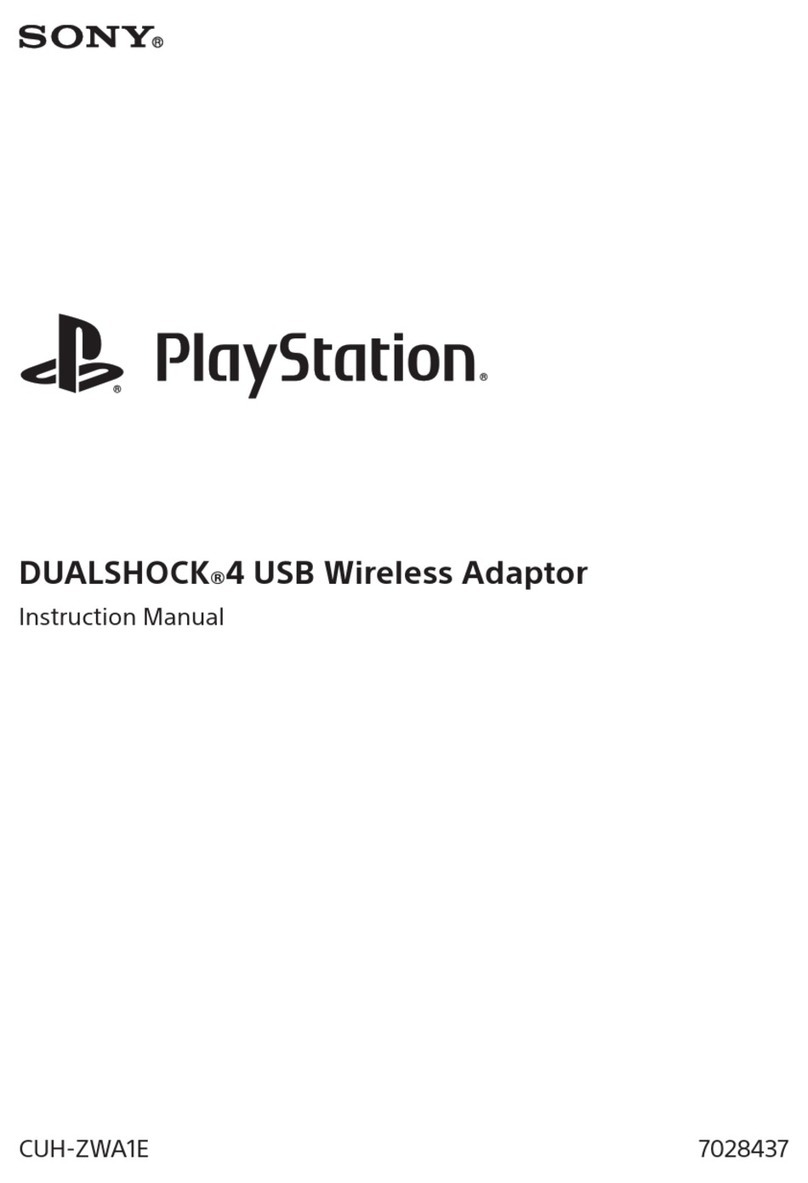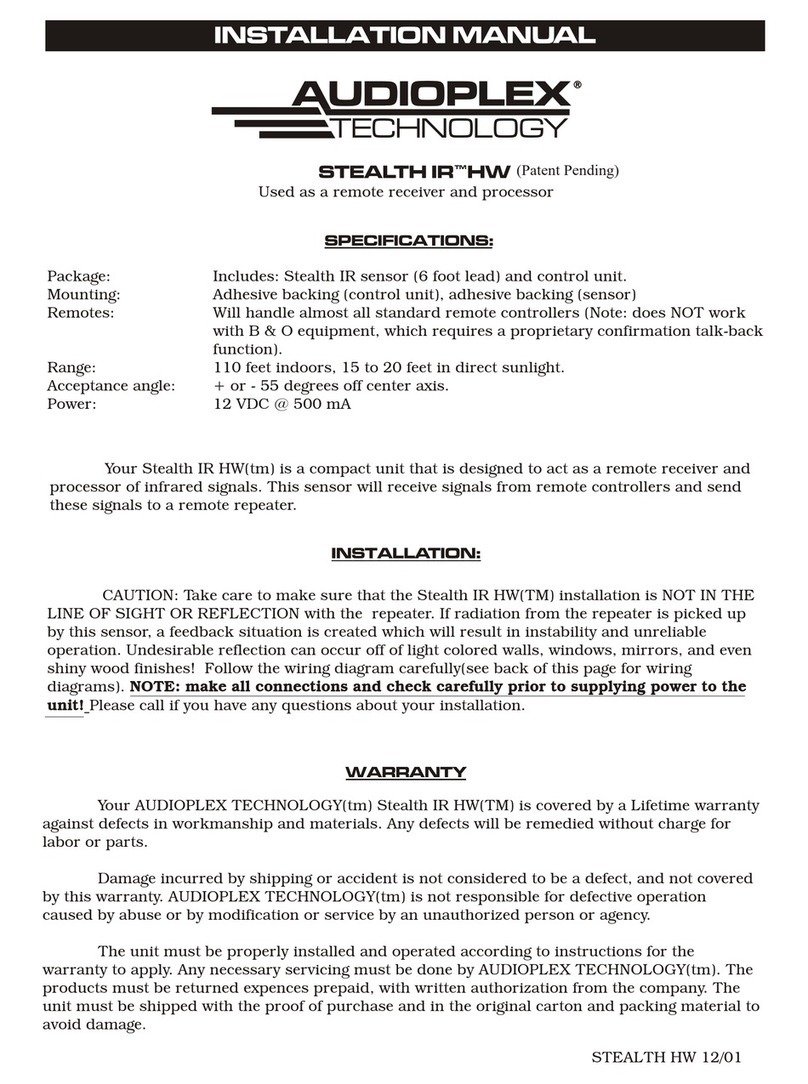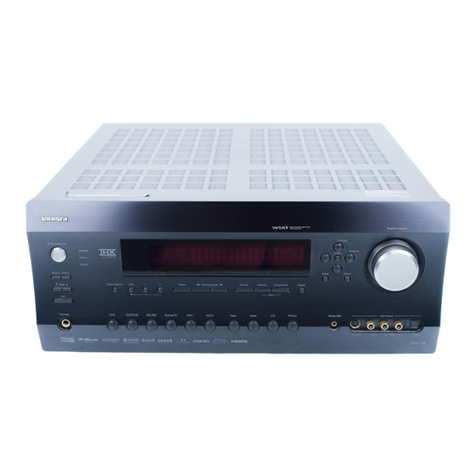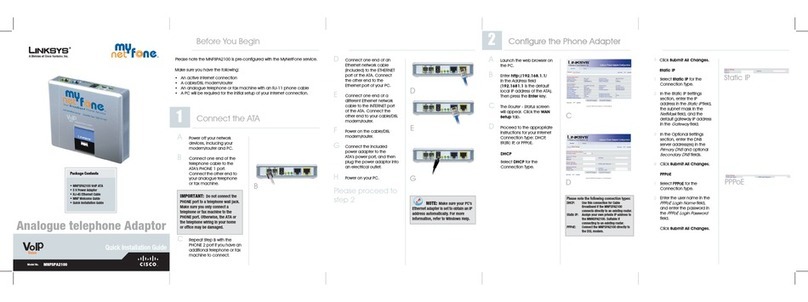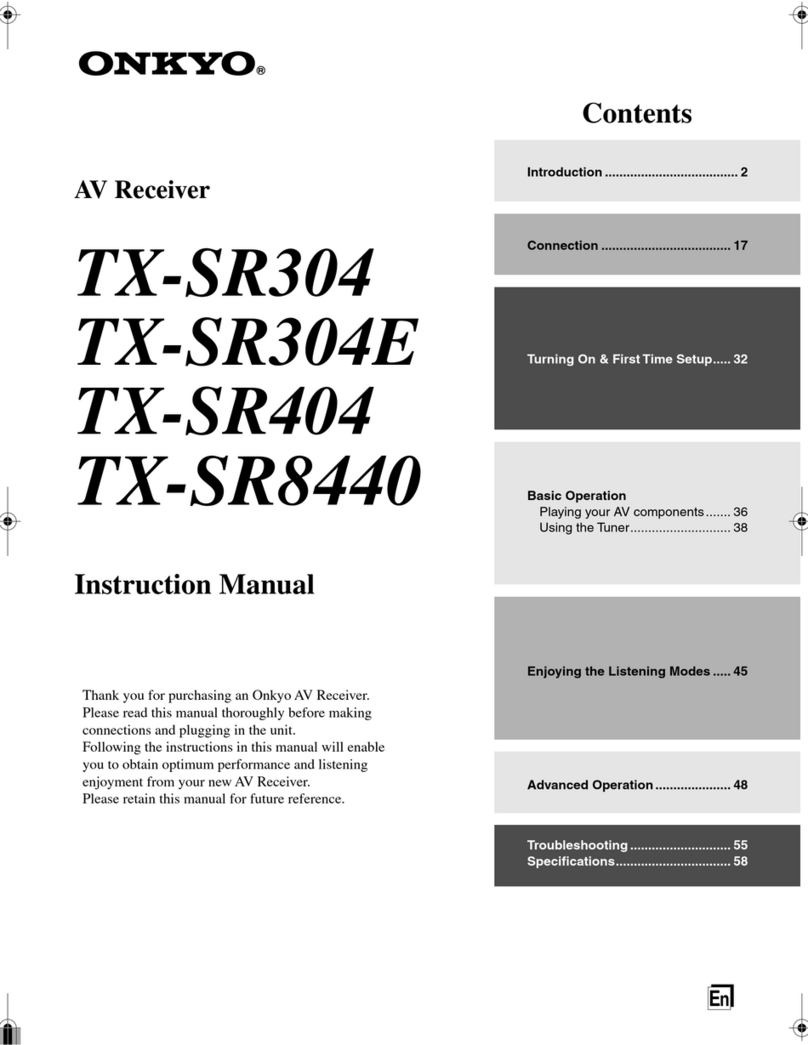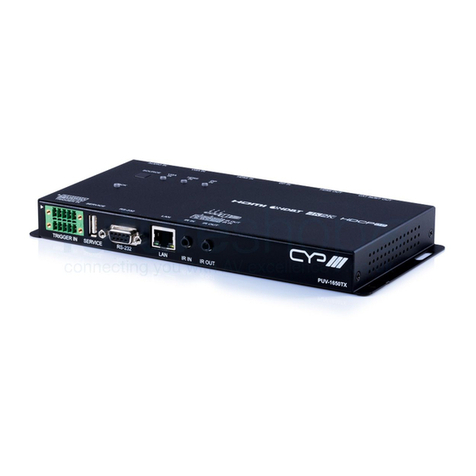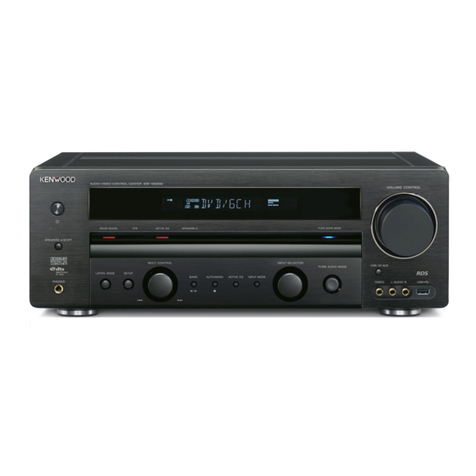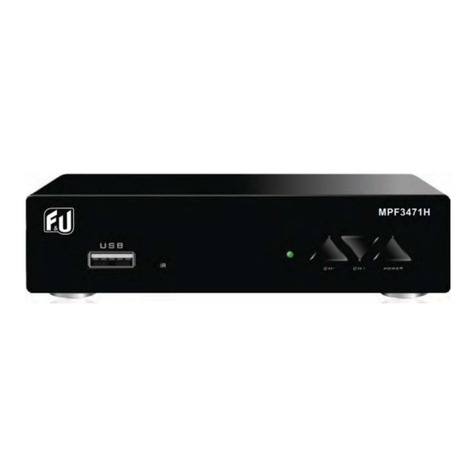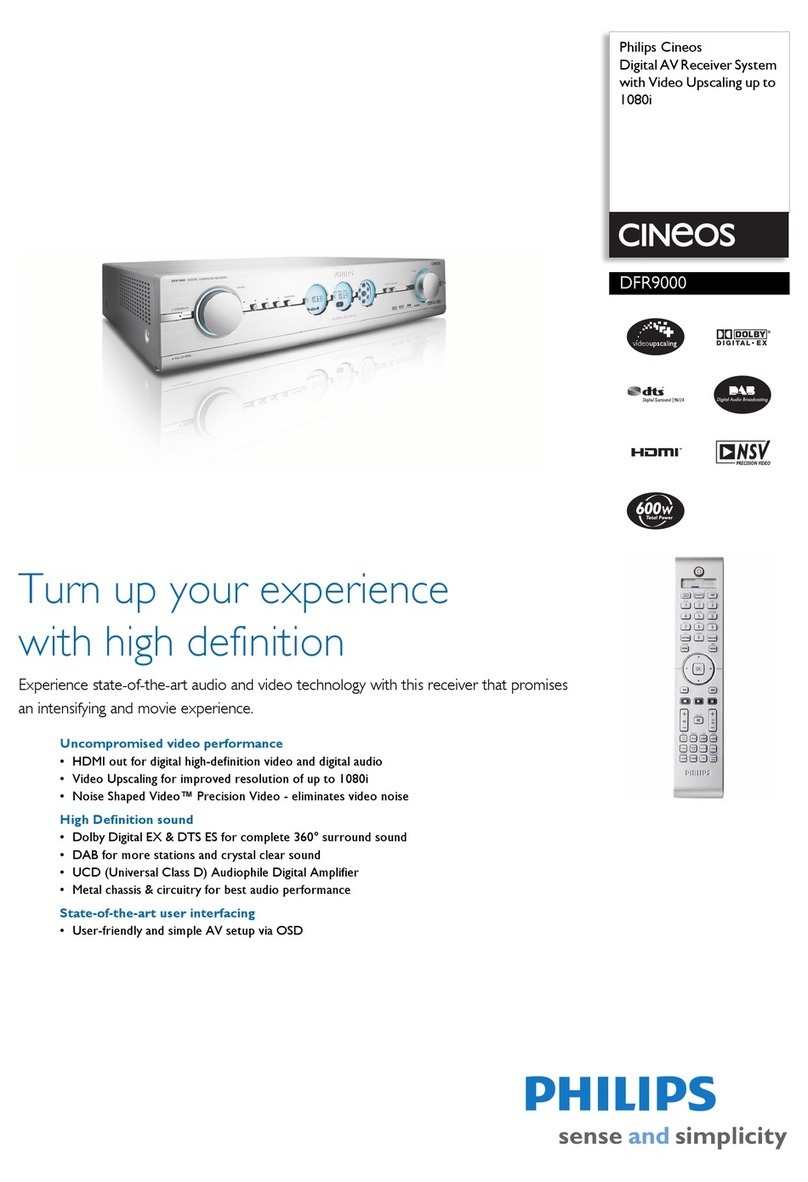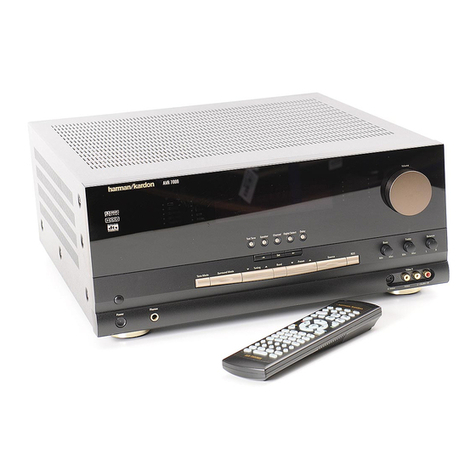JDS Uniphase 320A User manual

Artisan Technology Group is your source for quality
new and certied-used/pre-owned equipment
• FAST SHIPPING AND
DELIVERY
• TENS OF THOUSANDS OF
IN-STOCK ITEMS
• EQUIPMENT DEMOS
• HUNDREDS OF
MANUFACTURERS
SUPPORTED
• LEASING/MONTHLY
RENTALS
• ITAR CERTIFIED
SECURE ASSET SOLUTIONS
SERVICE CENTER REPAIRS
Experienced engineers and technicians on staff
at our full-service, in-house repair center
WE BUY USED EQUIPMENT
Sell your excess, underutilized, and idle used equipment
We also offer credit for buy-backs and trade-ins
www.artisantg.com/WeBuyEquipment
REMOTE INSPECTION
Remotely inspect equipment before purchasing with
our interactive website at www.instraview.com
LOOKING FOR MORE INFORMATION?
Visit us on the web at www.artisantg.com for more
information on price quotations, drivers, technical
specications, manuals, and documentation
Contact us: (888) 88-SOURCE | sales@artisantg.com | www.artisantg.com
SM
View
Instra

MODEL 320A
3 GHz O/E RECEIVER
User’s Manual
Artisan Technology Group - Quality Instrumentation ... Guaranteed | (888) 88-SOURCE | www.artisantg.com

MN320ac0 December 1999
Contents
Safety Information, Instructions, and Symbols ..........................................................................1
Safety Information................................................................................................................1
Classification............................................................................................................1
Disconnecting from Line Power...............................................................................1
Line Power Requirements .......................................................................................1
Safety Instructions................................................................................................................2
Before Initializing and Operating the Unit.................................................................2
Operating the Unit....................................................................................................2
Safety Symbols....................................................................................................................4
Compliance..........................................................................................................................5
CE Compliance........................................................................................................5
General Information and Specifications.....................................................................................6
General Information..............................................................................................................6
Key Features............................................................................................................7
Applications..............................................................................................................7
Standard Accessories..............................................................................................7
Optional Configuration..............................................................................................7
Specifications.......................................................................................................................8
Getting Started............................................................................................................................10
Before Initializing and Operating the Unit...........................................................................10
Initial Inspection..................................................................................................................10
Operating Environment......................................................................................................10
Temperature...........................................................................................................11
Humidity..................................................................................................................11
Ventilation...............................................................................................................11
Storing and Shipping..........................................................................................................11
Claims and Repackaging.......................................................................................11
Returning Shipments to JDS Uniphase.................................................................11
Cleaning Connectors.........................................................................................................12
Operating and Maintenance Instructions.................................................................................14
Front Panel.........................................................................................................................14
Rear Panel.........................................................................................................................15
Testing a Transmitter.........................................................................................................15
Testing Bit Error Rate........................................................................................................16
Maintaining the Receiver....................................................................................................17
Customized Features and Test Data ........................................................................................19
Artisan Technology Group - Quality Instrumentation ... Guaranteed | (888) 88-SOURCE | www.artisantg.com

MN320ac0 December 1999
For sales and service information,
contact JDS Uniphase or your local representative.
JDS Uniphase Corporation
305 East Drive
Melbourne, Florida
32904 USA
Phone: 407 984-3671
Fax: 407 728-0487
E-mail: [email protected]
Website: http://www.jdsunph.com
Artisan Technology Group - Quality Instrumentation ... Guaranteed | (888) 88-SOURCE | www.artisantg.com

Safety –1
Safety Information, Instructions, and Symbols
Safety Information
Classification
The unit consists of an exposed metal chassis that is connected directly to earth via a power
cord and, therefore, is classified as a Class 1 instrument. Class 1 refers to equipment relying on
ground protection as a means of shock protection.
The following symbol is used to indicate a protective conductor terminal in the unit.
Disconnecting from Line Power
Some of the circuits are powered whenever the unit is connected to the AC power source (line
power). To ensure that the unit is not connected to the line power, disconnect the power cord
from either the power inlet on the unit’s rear panel or from the AC line-power source (receptacle).
The power cord must always be accessible from one of these points. If the unit is installed in a
cabinet, the operator must be able to disconnect the unit from the line power by the system’s
line-power switch.
Line Power Requirements
The unit can operate from any single-phase AC power source that supplies between 100 and
240 V at a frequency range of 50 to 60 Hz. The maximum power consumption is 25 W.
Artisan Technology Group - Quality Instrumentation ... Guaranteed | (888) 88-SOURCE | www.artisantg.com

Safety –2
Safety Instructions
The following safety instructions must be observed whenever the unit is operated, serviced, or
repaired. Failure to comply with any of these instructions or with any precaution or warning
contained in the user’s manual is in direct violation of the standards of design, manufacture, and
intended use of the unit. JDS Uniphase assumes no liability for the customer’s failure to comply
with any of these safety requirements.
Before Initializing and Operating the Unit
þInspect the unit for any signs of damage, and read the user’s manual thoroughly.
þInstall the unit as specified in the Getting Started section.
þEnsure that the unit and any devices or cords connected to it are properly grounded.
Operating the Unit
Warning
To avoid the risk of injury or death, always observe the following precautions
before initializing the unit:
•
If using a voltage-reducing autotransformer to power the unit, ensure that the
common terminal connects to the earthed pole of the power source.
•Use only the type of power cord supplied with the unit.
•
Connect the power cord only to a power outlet equipped with a protective
earth contact. Never connect to an extension cord that is not equipped with
this feature.
•Willfully interrupting the protective earth connection is prohibited.
•
Never look into the end of an optical cable connected to an optical output
device that is operating. Laser radiation is invisible, and direct exposure can
severely injure the human eye. For more information, see the user’s manual
of the laser source in use.
•
Turning off the power to the device does not always block the externally
supplied radiation to the connector at the output of the unit.
•Do not use the unit outdoors.
•
To prevent potential fire or shock hazard, do not expose the unit to any
source of excessive moisture.
•Do not operate the unit when its covers or panels have been removed.
•
Do not interrupt the protective earth grounding. Any such action can lead to a
potential shock hazard that can result in serious personal injury.
•
Do not operate the unit if an interruption to the protective grounding is
suspected. In this case, ensure that the unit remains inoperative.
•
Use only the type of fuse specified by the manufacturer as appropriate for
this unit. Do not use repaired fuses, and avoid any situations that can short-
Artisan Technology Group - Quality Instrumentation ... Guaranteed | (888) 88-SOURCE | www.artisantg.com

Safety –3
circuit the fuse.
•
Unless absolutely necessary, do not attempt to adjust or perform any
maintenance or repair procedure when the unit is opened and connected to a
power source.
•Repairs are to be carried out only by a qualified professional.
•
Do not attempt any adjustment, maintenance, or repair procedure to the
unit’s internal mechanism if immediate first aid is not accessible.
•
Disconnect the power cord from the unit before adding or removing any
components.
•
Operating the unit in the presence of flammable gases or fumes is extremely
hazardous.
•
Do not perform any operating or maintenance procedure that is not
described in the user’s manual.
•
Some of the unit’s capacitors can be charged even when the unit is not
connected to the power source.
Artisan Technology Group - Quality Instrumentation ... Guaranteed | (888) 88-SOURCE | www.artisantg.com

Safety –4
Safety Symbols
The following symbols and messages can be marked on the unit (Table 1). Observe all safety
instructions that are associated with a symbol.
Table 1: Safety Symbols
Symbol Description
Laser safety. See the user’s manual for instructions on handling and operating
the unit safely.
See the user’s manual for instructions on handling and operating the unit safely.
Electrostatic discharge (ESD). See the user’s manual for instructions on
handling and operating the unit safely.
Frame or chassis terminal for electrical grounding within the unit.
Protective conductor terminal for electrical grounding to the earth.
WARNING
The procedure can result in serious injury or loss of life if not carried out
in proper compliance with all safety instructions. Ensure that all
conditions necessary for safe handling and operation are met before
proceeding.
CAUTION
The procedure can result in serious damage to or destruction of the unit if not
carried out in compliance with all instructions for proper use. Ensure that all
conditions necessary for safe handling and operation are met before proceeding.
Artisan Technology Group - Quality Instrumentation ... Guaranteed | (888) 88-SOURCE | www.artisantg.com

Safety –5
Compliance
CE Compliance
The unit has been designed and tested to comply with directive 73/23/EEC and its subsequent
amendments by the European Community (EC or CE). The directive relates to electrical
equipment designed for use within certain voltage limits. It ensures that electrical equipment is
constructed with good engineering practice in safety matters.
The unit has been designed and tested to comply with directive 89/336/EEC and its subsequent
amendments. The directive relates to electromagnetic compatibility. It demands that
electromagnetic disturbance does not exceed a prescribed level; that the equipment be immune
to a prescribed level of ambient level of interference; that the equipment be protected against
electrostatic discharges; and that the equipment be immune to all electrical shock wave
disturbances. As of 1997, measures have been added to test for fire hazard, electric shock
hazard, and also external exposure to other forms of energy.
The requirements specified by directive 89/336/EEC are as follows. CE compliance requires that
the manufacturer or its authorized representative established within the Community affix the EC
conformity mark to the apparatus or else to the packaging, instructions for use, or guarantee
certificate. The EC conformity mark shall consist of the letters CE as specified and the figures of
the year in which the mark was affixed. This mark should, where appropriate, be accompanied
by the distinctive letters used by the notified body issuing the EC type-examination certificate.
Where the apparatus is the subject of other Directives providing for the EC conformity mark, the
affixing of the EC mark shall also indicate conformity with the relevant requirements of those
other Directives.
Artisan Technology Group - Quality Instrumentation ... Guaranteed | (888) 88-SOURCE | www.artisantg.com

General Information and Specifications –6
General Information and Specifications
General Information
This user’s manual for the Model 320A 3 GHz O/E Receiver contains complete operating
instructions. The inspection report and a description of any customer-requested information are
found in the Customized Features and Test Data section.
The receiver (Figure 1) detects and converts optical signals into electrical signals for the
purpose of transmitter waveform analysis and testing, including error rate testing. It is optimized
for analysis of high-speed, low-level optical signals from single-mode fiber sources. The high
bandwidth (3 GHz) and high gain (2500 V/W) enable detection and analysis of up to 2.5 Gb/s
signals at levels down to below -30 dBm. The receiver is also equipped with a high-level input
port for direct connection of laser sources at power levels up to +3 dBm without overload. The
Model 320A 3 GHz O/E Receiver is the one solution that provides users with a low-cost, high-
quality instrument for optical eye pattern analysis and testing at low to high power levels.
Figure 1: 320A Receiver
The receiver consists of a 3 GHz bandwidth optical-to-electrical (O/E) converter (1100 to 1600
nm) and a 3 Gb/s limiting amplifier. The detector out port for the O/E converter is DC coupled
and automatically nulled to <±100 µV DC. The nulling is automatically performed when the
receiver does not have an optical input. A typical OC-48 eye diagram for the detector output is
shown in Figure 2.
Figure 2: Detector Out Eye Diagram
Artisan Technology Group - Quality Instrumentation ... Guaranteed | (888) 88-SOURCE | www.artisantg.com

General Information and Specifications –7
The O/E detector’s conversion gain is typically 2500 V/W and is a minimum of 2000 V/W (Figure
3).
-40 -35 -30 -25 -20 -15 -10
1000
500
5000
Optical Power (dBm)
Typical
Guaranteed
2000 V/W
Conversion Gain(V/W)
Figure 3: O/E Detector Conversion Gain
The input and both outputs of the limiting amplifier are AC-coupled.
Key Features
•Detector bandwidth DC 3 GHz
•High O/E gain (2500 V/W)
•Limiting amplifier included
•No gain or offset adjustments needed
Applications
•O/E conversion for transmitter testing
Standard Accessories
•AC power cord
•Two universal connector adapters
•User’s manual
Optional Configuration
•Rack-mount version
Artisan Technology Group - Quality Instrumentation ... Guaranteed | (888) 88-SOURCE | www.artisantg.com

General Information and Specifications –8
Specifications
The following optical specifications describe the warranted characteristics of the unit (Table 2).
Supplementary specifications describe the typical non-warranted performance of the unit (Table
3).
Table 2: Optical Specifications
Parameter Specification
O/E Detector Section
High power optical input 1.0 mW (0 dBm) maximum
Low power optical input 200 µW (-7 dBm) maximum
Bandwidth (-3 dB) DC to 2.5 GHz minimum
3.0 GHz typical
Maximum conversion gain12000 V/W minimum
2500 V/W typical
For low power input; reduces as average input power
increases
Wavelength 1200 to 1600 nm; InGaAs APD detector
Fiber interface 9/125 µm single-mode
Optical input connector Diamond universal screw-on adapter
Input optical return loss 30 dB minimum, 1310/1550 nm
Minimum detectable signal2
low power input
high power input
100 nW (-40 dBm)
2000 nW (-27 dBm)
Polarity Non-inverting (high input = high output)
DC offset, detector out Automatically nulled to <±100 µV DC; automatic
nulling is enabled when optical input power is
removed
Overload indicator (flashing red LED) Alarms at approximately 0.2 mW to indicate possible
output overload distortion
Limiting Amplifier Section
Limiting amplifier input 1.0 V peak-to-peak (pp) maximum
Bit rate30.01 to 2.5 Gb/s minimum
3.0 Gb/s typical
Gain324 dB minimum
26 dB typical
Rise/fall times 150 ps maximum, 20 to 80%, when in limiting region
with 50 ohm termination
(table continued)
Artisan Technology Group - Quality Instrumentation ... Guaranteed | (888) 88-SOURCE | www.artisantg.com

General Information and Specifications –9
Parameter Specification
Return loss (50 ohm)
input
output
10 dB minimum, frequency <2 GHz
10 dB minimum, frequency <2 GHz
Output amplitude (when in limiting
region with 50 ohm termination) 0.45 Vpp minimum
0.60 Vpp typical
Input level for full limiting 30 mVpp minimum
500 mVpp maximum
1Gain self-adjusts to protect the sensitive avalanche detector.
2The minimum detectable signal is the minimum optical input power required for unity output peak-to-peak
signal-to-root-mean-square (rms) noise ratio, measured in the full detector bandwidth.
3Below limiting, the amplifier performs as a normal linear amplifier. Response is not guaranteed in the non-
limiting linear region.
Table 3: Other Specifications
Electrical
Input voltage 100 to 240 V AC, 50 to 60 Hz
Power consumption 25 W maximum
Electric input connectors Female, SMA or N
Physical
Dimensions (W x H x D) 25.7 x 11.5 x 26.4 cm (10.13 x 4.54 x 10.39 in)
Weight 2.7 kg (6 lbs)
Environmental
Operating temperature 10 to 40 °C
Storage temperature -20 to 70 °C
Humidity 95% RH from 10 to 40 °C non-condensing
Artisan Technology Group - Quality Instrumentation ... Guaranteed | (888) 88-SOURCE | www.artisantg.com

Getting Started –10
Getting Started
The Model 320A 3 GHz O/E Receiver consists of the receiver unit, an AC power cord, and two
universal adapters installed on the receiver.
Before Initializing and Operating the Unit
þInspect the unit for any signs of damage.
þRead the user’s manual thoroughly, and become familiar with all safety symbols and
instructions to ensure that the unit is operated and maintained safely.
Initial Inspection
Warning
To avoid electrical shock, do not initialize or operate the unit if it bears any sign of
damage to any portion of its exterior surface, such as the outer cover or panels.
Check that the unit and contents are complete:
1. Wear an anti-static wrist strap and work in an electrostatic discharge (ESD) controlled area.
2. Inspect the shipping container for any indication of excessive shock to the contents, and
inspect the contents to ensure that the shipment is complete.
3. Inspect the unit for structural damage that can have occurred during shipping.
4. Connect the unit to a power source, using the AC power cord provided.
5. Set the power switch to I(on).
6. Apply an optical signal between -10 and -30 dBm to the Low Power Input port. Verify that the
Input Status LED is green.
7. Turn the power switch off (O), then on (I). With the optical signal still connected, verify that
the Input Status LED is flashing.
8. Remove the optical signal and verify that the Input Status LED is not lit.
9. Keep the packaging.
Immediately inform JDS Uniphase and, if necessary, the carrier if the contents of the shipment
are incomplete, if the unit or any of its components are damaged or defective, or if the unit does
not pass the initial inspection.
Operating Environment
In order for the unit to meet the warranted specifications, the operating environment must meet
the following conditions for temperature, humidity, and ventilation.
Artisan Technology Group - Quality Instrumentation ... Guaranteed | (888) 88-SOURCE | www.artisantg.com

Getting Started –11
Temperature
The unit can be operated in the temperature range of 10 to 40 °C.
Humidity
The unit can be operated in environments with up to 95% humidity (10 to 40 °C). Do not expose
it to any environmental conditions or changes to environmental conditions that can cause
condensation to form inside the unit.
Ventilation
Do not block the rear and bottom vents. Blocking the air circulation around the unit can cause the
unit to overheat, compromising its reliability.
Warning
•Do not use the unit outdoors.
•
To prevent potential fire or shock hazard, do not expose the unit to any
source of excessive moisture.
Storing and Shipping
To maintain optimum operating reliability, do not store the unit in locations where the temperature
falls below -20 °C or rises above 70 °C. Avoid any environmental condition that can result in
internal condensation. Ensure that these temperature and humidity requirements can also be
met whenever the unit is shipped.
Claims and Repackaging
Immediately inform JDS Uniphase and, if necessary, the carrier, if
•The contents of the shipment are incomplete
•The unit or any of its components are damaged or defective
•The unit does not pass the initial inspection
In the event of carrier responsibility, JDS Uniphase will allow for the repair or replacement of the
unit while a claim against the carrier is being processed.
Returning Shipments to JDS Uniphase
JDS Uniphase only accepts returns for which an approved Return Material Authorization (RMA)
has been issued by JDS Uniphase sales personnel. This number must be obtained prior to
shipping any material to JDS Uniphase. The owner’s name and address, the model number and
full serial number of the unit, the RMA number, and an itemized statement of claimed defects
must be included with the return material.
Ship return material in the original shipping container and packing material. If these are not
available, typical packaging guidelines are as follows:
1. Wear an anti-static wrist strap and work in an ESD controlled area.
Artisan Technology Group - Quality Instrumentation ... Guaranteed | (888) 88-SOURCE | www.artisantg.com

Getting Started –12
2. Cover the front panel, if applicable, with a strip of cardboard.
3. Wrap the unit in anti-static packaging. Use anti-static connector covers, as applicable.
4. Pack the unit in a reliable shipping container.
5. Use enough shock-absorbing material (10 to 15 cm or 4 to 6 in on all sides) to cushion the
unit and prevent it from moving inside the container. Pink poly anti-static foam is the best
material.
6. Seal the shipping container securely.
7. Clearly mark FRAGILE on its surface.
8. Always provide the model and serial number of the unit and, if necessary, the RMA number
on any accompanying documentation.
Cleaning Connectors
Caution
•
Connecting damaged or dirty fibers to the unit can damage the connectors
on the unit.
•
Never force an optical connector. Some connectors have a ceramic ferrule
that can easily be broken.
Optical cable ends need to be cleaned before using them with the unit.
The following items are required for cleaning:
•Filtered compressed air or dusting gas (for example, Tech Spray Envi-Ro-Tech Duster 1671
gas, available at http://www.techspray.com/1671.htm)
•Lint-free pipe cleaners (for example, from 3M1) or lint-free swab
•Lint-free towels (for example, 10 x10 cm or 4 x 4 in HydroSorb III wipers, available at
http://www.focenter.com/acctech/hydrosobr_wipers.htm)
•Optical grade isopropyl alcohol or optical grade 200° ethanol (do not use rubbing alcohol,
which contains 30% water)
To clean the connectors:
1. Blow the sleeve with filtered compressed air (Figure 4).
13M is a trademark of 3M.
Artisan Technology Group - Quality Instrumentation ... Guaranteed | (888) 88-SOURCE | www.artisantg.com

Getting Started –13
Figure 4: Connector Cleaning (connector type can vary)
2. Apply optical grade isopropyl alcohol or optical grade ethanol (do not use rubbing alcohol) to
a small area of a lint-free towel and rub the end of the ferrule over the wet area.
3. Wipe the ferrule on a dry area of the lint-free towel.
4. Using the dusting gas or compressed air, blow the end of the ferrule.
5. Apply the alcohol or ethanol to a lint-free pipe cleaner or swab and wipe off the remaining
parts of the connector.
6. With the other end of the pipe cleaner or swab, dry the areas cleaned.
7. Using the dusting gas or compressed air, blow the areas cleaned.
Artisan Technology Group - Quality Instrumentation ... Guaranteed | (888) 88-SOURCE | www.artisantg.com

Operating and Maintenance Instructions –14
Operating and Maintenance Instructions
Front Panel
The front of the receiver is shown in Figure 5.
HIGH GAIN 3 GHz OPTICAL RECEIVER
LIMITINGAMPLIFIER
BIT RATE = 10 TO 3000 Mb/s
I
0
ENABLE
MODEL 320A
POWER
ESD
!
50 Ω
ESD
!
50 Ω
DISABLE
DISABLE WHEN NOT IN USE
ESD
!
50Ω
OUTPUTS LIMIT AT 500 mVpp
DATA
OUT
DATA
OUT
30 TO 500 mVpp
INPUT
ESD
!
50 Ω
HIGH POWER INPUT
+3dBmMAX
LOW POWER INPUT
-10dBm MAX
SINGLEMODE INPUT
DC-3.0GHz/1100-1600nm
Input
Status
O/E DETECTOR
DETECTOR OUT
Figure 5: Front of Receiver
Power section On-off (I/O) power switch and green LED power on indicator.
Data Out One non-inverting electrical output (upper port) and one inverting electrical
output (lower port).
Enable/Disable The Enable position is engaged when using the limiting amplifier. When not
in use, disable the limiting amplifier.
Input Electrical input; it can be from the Detector Out port of the receiver or can
originate elsewhere.
Input Status LED Green—optical input present (>-39 dBM at the Low Power Input or >-26
dBm at the High Power Input)
Flashing green—the receiver was powered on with an optical input
present, but nulling has not been performed. Remove the optical input for
about 1 s.
Flashing red—input overload—the electrical output can be distorted due
to too much optical power. Reduce the optical power.
Not lit—there is no optical input present
Low Power Input -10 dBm maximum input signal
High Power Input 3 dBm maximum input signal
Detector Out This detector out port is DC coupled and automatically nulled to <±100 µV
DC. The nulling is automatically performed when the receiver does not
have an optical input.
Artisan Technology Group - Quality Instrumentation ... Guaranteed | (888) 88-SOURCE | www.artisantg.com

Operating and Maintenance Instructions –15
Rear Panel
The back of the receiver is shown in Figure 6.
100-240VAC 50/60Hz
WARNING: THE PROTECTIVE EARTH
GROUNDINGS ON THIS EQUIPMENT MUST
BE MAINTAINED TO PROVIDE PROTECTION
FROM ELECTRICAL SHOCK
NO USER SERVICEABLE PARTS INSIDE.
REFER SERVICING TO QUALIFIED PERSONNEL.
FOR LABORATORY USE
BY QUALIFIED PERSONNEL
POUR USAGE EN LABORATOIRE
PAR PERSONNEL QUALIFIÉ.
!
Figure 6: Back of Receiver
Testing a Transmitter
A source can be tested (waveform analysis) using the high power or low power optical input.
Optical inputs of -10 dBm or less are connected to the low power input. Optical inputs up to 3
dBm are connected to the high power input. Levels greater than the maximum do not damage
the receiver, but the input status LED flashes red to indicate optical overload. When in overload,
the electrical output from the Detector Out port can be distorted. Do not operate the receiver in
overload.
To test a source:
1. Set the power switch to I(on) and allow the receiver to stabilize thermally for approximately
15 minutes before applying an optical input. The DC content of the detector output is
thermally sensitive and varies when the receiver is powered on. The automatic nulling
circuitry operates at maximum effectiveness when stabilized.
2. Connect the source to the appropriate input and terminate the outputs (Figure 7). The limiting
amplifier oscillates if an input is not connected and the outputs are not terminated. This
oscillation introduces noise into the O/E Detector, reducing the signal-to-noise ratio of the
output (Detector Out port).
Artisan Technology Group - Quality Instrumentation ... Guaranteed | (888) 88-SOURCE | www.artisantg.com

Operating and Maintenance Instructions –16
Figure 7: Testing a Source (connection to Low Power Input port shown)
3. For any measurement that relies on output nulling, remove the optical input momentarily
before making the measurement. This action ensures that any changes in the DC offset due
to thermal changes are nulled out.
Testing Bit Error Rate
The limiting amplifier output can be connected to a variety of equipment, including a bit error rate
test set.
To use the receiver for BER testing:
1. Set up the equipment as shown in Figure 8. The O/E Detector’s electrical output can be
connected directly to the Input of the Limiting Amplifier section, so that the unit functions as a
receiver.
Figure 8: Bit Error Rate Testing Setup
2. Set the Enable/Disable switch to Enable. The amplifier is enabled. A typical output of the
limiting amplifier at OC-48 is shown in Figure 9.
Artisan Technology Group - Quality Instrumentation ... Guaranteed | (888) 88-SOURCE | www.artisantg.com
Table of contents
